9 siti storici meno conosciuti in Italia
You’ve all heard about Italian landmarks like the Colosseum and Venice’s canals, so today, let’s explore some of the lesser-known historical sites in Italy. I’m talking about the hidden gems that don’t always get the spotlight in tourist brochures.
Sicuramente avrete sentito tutti parlare di icone italiane come il Colosseo e i canali di Venezia. Oggi, dunque, esploreremo alcuni siti storici meno conosciuti in Italia: quei tesori nascosti che non sempre ricevono l’attenzione che meritano nei depliant turistici.
These sites aren’t just pretty to look at. They offer a glimpse into Italy’s fascinating past and a chance to uncover some juicy stories that rushed tourists might miss.
Questi siti non sono solo belli da vedere, ma offrono anche un affascinante sguardo nel passato dell’Italia e la possibilità di scoprire storie interessanti che potrebbero sfuggire ai turisti frettolosi.
So let’s ditch the crowds for a moment and prepare to travel back in time. Italy’s got a whole lot more to offer than you ever imagined!
Abbandoniamo per un attimo la folla e prepariamoci a fare un salto nel passato. L’Italia è una terra ricca di tesori nascosti, che spesso superano di gran lunga le nostre aspettative. Scopriamoli insieme!
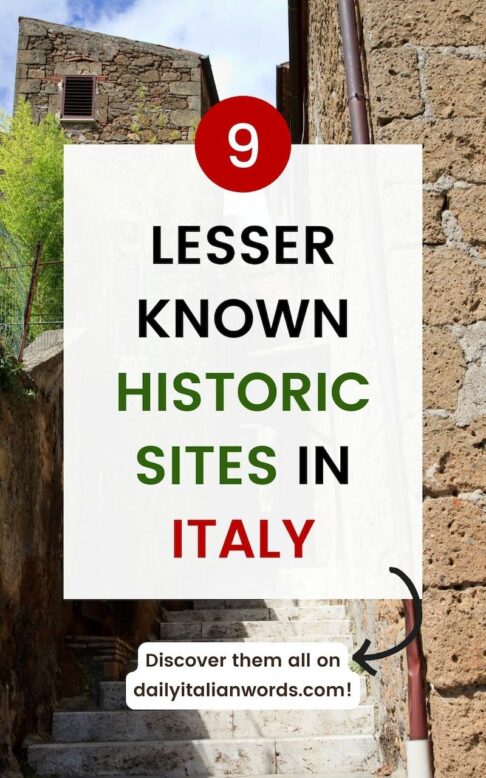
The tuff cities of Tuscany
Le città del tufo in Toscana
In the heart of Maremma, imposing tufaceous formations are home to some of Tuscany’s most precious gems: Pitigliano, Sovana, and Sorano. They are known as the “tuff cities” for the unique geological composition of the territory where they are located. The houses here are one with the rock. Trust me, you’ll be struck by how seamlessly they blend into the rocky terrain. But they are not just gorgeous: each city boasts its own rich history and cultural heritage.
Nel cuore della Maremma, imponenti formazioni di tufo custodiscono alcune delle più preziose gemme della Toscana: Pitigliano, Sovana e Sorano. Queste città sono conosciute come le “città del tufo” per via della loro composizione geologica davvero unica. Le case qui si fondono perfettamente con la roccia, creando un’armonia senza eguali. Ma non sono solo belle da vedere: ogni città, infatti, racchiude una ricca storia e un patrimonio culturale di inestimabile valore.
Pitigliano is the most famous, dubbed “the little Jerusalem” due to a historic Jewish community living there, while Sovana, the birthplace of Pope Gregory VII, boasts one of Italy’s most picturesque squares. Lastly, in Sorano, you’ll have the opportunity to explore an Archaeological Park that boasts some of the most significant archaeological evidence of the Etruscan civilisation.
Pitigliano è la più famosa delle tre, ed è soprannominata “la piccola Gerusalemme” in quanto ospita una storica comunità ebraica. Sovana, luogo di nascita di Papa Gregorio VII, vanta una delle piazze più pittoresche d’Italia. Infine, a Sorano, si può esplorare il Parco Archeologico che presenta alcune delle più significative evidenze archeologiche della civiltà etrusca.

The spectacular Palladian architecture in Vicenza
La spettacolare architettura palladiana a Vicenza
Just under an hour away from Venice, Vicenza is a charming town with a treasure trove of architectural delights. At the heart of it all lies the legacy of Renaissance architect Andrea Palladio, who put Vicenza on the map as the epicentre of his distinctive style. Think harmonious proportions, classical elements, and innovative designs, all of which were greatly inspired by ancient Roman architecture.
A poco meno di un’ora di distanza da Venezia, Vicenza è una città affascinante che vanta uno splendido tesoro architettonico. Al centro di tale bellezza si trova l’eredità dell’architetto rinascimentale Andrea Palladio, il quale ha reso famosa Vicenza come epicentro del suo stile distintivo. Si tratta di un’architettura che si ispira alla classicità romana, caratterizzata da proporzioni armoniose, elementi classici e innovativi design.
Iconic landmarks such as Villa Capra “La Rotonda”, the Basilica Palladiana, and the grand Teatro Olimpico are shining examples of Palladio’s genius, which had a profound influence on the architectural landscape across Europe and North America. “His style, recognisable in all its greatness, can even be found in Thomas Jefferson’s famous Monticello house, located in Virginia.
Luoghi iconici come Villa Capra “La Rotonda”, la Basilica Palladiana e il grandioso Teatro Olimpico rappresentano il genio di Palladio, che ha esercitato una profonda influenza sull’architettura in Europa e Nord America. Il suo stile, riconoscibile in tutta la sua grandezza, si può persino ritrovare nella famosa casa di Monticello di Thomas Jefferson, situata in Virginia.
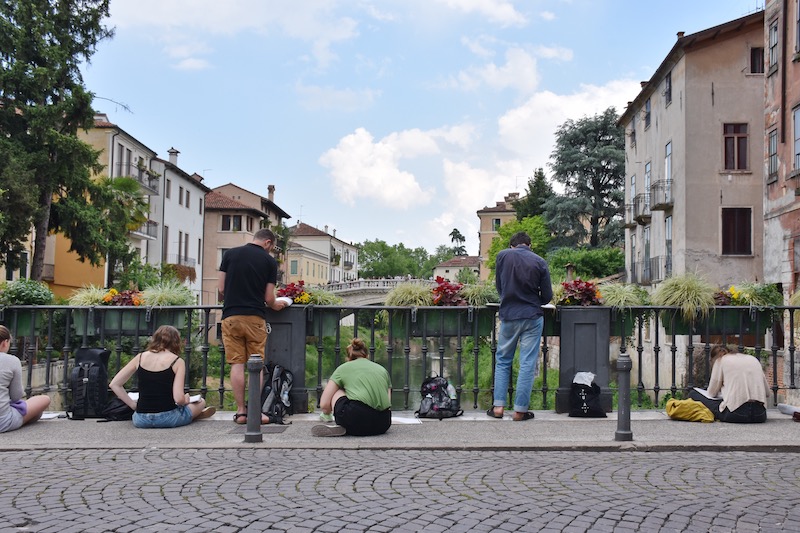
Castel del Monte in Puglia
Castel del Monte in Puglia
Perched atop a hill in the heart of Puglia, Castel del Monte is one of Italy’s most enigmatic sites. A UNESCO World Heritage site since 1996, this architectural marvel was built by the Holy Roman Emperor Frederick II in the 13th century. It incorporates elements from classical antiquity, the Islamic Orient, and the European Cistercian Gothic style, creating a harmonious blend of cultural influences.
Sulla cima di una collina nel cuore della Puglia, si erge uno dei siti più enigmatici d’Italia: Castel del Monte. Dichiarato patrimonio mondiale dell’UNESCO nel 1996, questa meraviglia architettonica fu commissionata dall’Imperatore del Sacro Romano Impero Federico II nel XIII secolo. La struttura è una combinazione di elementi dell’antichità classica, dell’Oriente islamico e dello stile gotico europeo cistercense, che si fondono armoniosamente per creare una variegata espressione di influenze culturali.
The castle’s unique octagonal shape, adorned with eight equally stunning octagonal towers, has long fascinated historians, mathematicians, and architects alike. Such mysterious symmetry and numerological symbolism have given rise to countless theories and legends, further enchanting visitors. Legend has it that the number eight held a special significance for Frederick II, symbolising power, wisdom, and the balance between the earthly and heavenly realms.
La forma davvero unica di questo castello, ottagonale e arricchita da otto torri altrettanto suggestive, ha sempre affascinato storici, matematici e architetti. La misteriosa simmetria e il simbolismo numerologico hanno dato vita a innumerevoli teorie e leggende, incantando i visitatori. C’è chi dice che il numero otto avesse una particolare importanza per Federico II, in quanto simbolo di potere, saggezza e dell’equilibrio tra il mondo terreno e quello celeste.

The archeological park of Selinute in Sicily
Il parco archeologico di Selinute in Sicilia
The Valley of Temples in Agrigento may be the most famous example of Greek architecture in Sicily, but a bit further up along the island’s southern coast, Selinute is a sight to behold. This site park is not just another collection of ruins, it’s the largest archeological park in Europe, covering about 270 hectares and 2,500 years of history!
La Valle dei Templi ad Agrigento è sicuramente l’esempio più celebre di architettura greca in Sicilia. Tuttavia, un po’ più a nord lungo la costa meridionale dell’isola, Selinunte rappresenta uno spettacolo imperdibile. Questo sito non è l’ennesima collezione di reperti storici, bensì si tratta del più grande parco archeologico d’Europa: circa 270 ettari in cui sono racchiusi 2.500 anni di storia.
Founded by Greek colonists in 628 BC, Selinute was once one of the most important and glorious cities in all of Magna Graecia. Its story came to an end during the First Punic War, but the area stood the test of time, and today you can admire the incredible architecture that has survived for centuries. The pièce de résistance is the colossal Temple of Apollo, its proud Doric columns standing tall against the azure skies, a testament to the architectural prowess of the ancient Greeks.
Fondata dai coloni greci nel 628 a.C., un tempo Selinunte era una delle città più importanti e gloriose di tutta la Magna Grecia. Sebbene la sua storia sia giunta al termine durante la prima guerra punica, l’area ha resistito alla prova del tempo e oggi è ancora possibile ammirare l’incredibile architettura che è sopravvissuta per secoli. L’attrazione più importante è il grande Tempio di Apollo, con le sue imponenti colonne doriche che si ergono alte contro il cielo azzurro, un testimonianza della maestria architettonica degli antichi greci.
The Villa Romana del Casale in Sicily’s Piazza Armerina
La Villa Romana del Casale a Piazza Armerina in Sicilia
The Villa Romana del Casale, located in the heart of Sicily near the town of Piazza Armerina, is an extraordinary testament to the opulence and artistic mastery of the Roman Empire. Dating back to the 4th century AD, the estate is covered by over 3,500 square meters of mosaic tiles, making it one of the largest and most intricate mosaic collections on the planet.
La Villa Romana del Casale, ubicata nel cuore della Sicilia, vicino a Piazza Armerina, costituisce un’eccezionale testimonianza dell’opulenza e della maestria artistica dell’Impero Romano. Risalente al IV secolo d.C., questa residenza è interamente rivestita da oltre 3.500 metri quadrati di tasselli colorati, il che la rende una delle più grandi e complesse collezioni di mosaici al mondo.
Every inch of this ancient site tells a fascinating story about the social, economic, and cultural life of Roman Sicily, with captivating scenes of everyday life, mythology, and thrilling hunting expeditions. Make sure you don’t miss the stunning “Bikini Girls” panel showcasing young women engaging in various athletic activities (as well as history’s very first bikini!). This exquisite piece of art exemplifies the importance of physical fitness in Roman society, and you’ll be captivated by the grace and beauty of these ancient athletes.
Ogni centimetro di questo antico sito racchiude una storia affascinante sulla vita sociale, economica e culturale della Sicilia romana, con scene suggestive della vita quotidiana, della mitologia e delle avvincenti battute di caccia. Da non perdere il magnifico pannello raffigurante le “Ragazze in bikini”, che mostrano giovani donne alle prese con varie attività sportive (nonché il primo bikini della storia!). Questa meravigliosa opera d’arte è un esempio di quanto l’attività fisica fosse importante nella società romana.
La Scarzuola in Umbria
La Scarzuola in Umbria
Among the lesser-known historic sites in Italy, La Scarzuola is no ordinary attraction: it’s a mystical wonderland where the order of reality is subverted, and the line between reality and dreams becomes blurred. Located among the green hills of Umbria, it’s the ideal city designed by the Milanese architect Tomaso Buzzi in the 1950’s, built entirely of tuff, a versatile and easily adjustable material that adds to the site’s surreal allure. Expect a unique itinerary through a labyrinth of buildings, gardens, and sculptures, each with a unique story and symbolic meaning, resulting in one of Italy’s most enigmatic architectural works.
Tra i siti storici meno conosciuti in Italia, La Scarzuola è un’attrazione davvero unica: un regno mistico dove l’ordine della realtà viene sovvertito e la linea tra realtà e sogni si dissolve. Situata tra le verdi colline dell’Umbria, rappresenta l’ideale città progettata dall’architetto milanese Tomaso Buzzi negli anni ’50 ed è stata costruita interamente in tufo, un materiale versatile e facilmente modellabile che contribuisce all’attrattiva surreale del sito. Preparatevi a un itinerario unico attraverso un labirinto di edifici, giardini e sculture, ognuno con una storia e un significato simbolico particolare, che culmina in una delle opere architettoniche più enigmatiche d’Italia.
La Scarzuola’s origins date back to the 13th century, when Saint Francis founded a modest monastery on this very site. Today, the original monastery has been lovingly preserved and seamlessly integrated with Buzzi’s fantastical creations, resulting in a one-of-a-kind destination that defies description.
La Scarzuola ha radici che affondano nel XIII secolo, quando San Francesco fondò un modesto monastero proprio in questo luogo. Oggi, il monastero è stato amorevolmente preservato e integrato in modo coerente alle straordinarie creazioni di Buzzi, dando vita ad una destinazione senza eguali che sfugge a ogni descrizione.
The Sepino-Altilia archeological park in Molise
Il parco archeologico di Sepino-Altilia in Molise
If you thought Pompeii and Herculaneum were the only ancient Roman towns worth exploring, you might want to rethink that. The Sepino-Altilia archeological park is a gem in the Molise region boasting the remains of an ancient city – Saepinum – that was first established during the Samnite period in the 4th century BC. Fast forward to the 1st century BC, and it became a Roman colony with impressive public buildings, aqueducts, and stunning mosaics.
Se pensi che Pompei ed Ercolano siano le uniche antiche città romane che valga la pena esplorare, dovresti riflettere di nuovo. Il parco archeologico di Sepino-Altilia è una perla del Molise che presenta i resti di una città antica – Saepinum – fondata durante il periodo sannita nel IV secolo a.C. Nel I secolo a.C. diventa poi una colonia romana con impressionanti edifici pubblici, acquedotti e splendidi mosaici.
Today, the site includes well-preserved remains of ancient walls, public buildings, an amphitheater, and a network of streets and alleys that were once the bustling heart of Roman urban life. And the best part? Entrance is free, so no need to break the bank for this fascinating glimpse into the past.
Oggi, il sito ospita resti ben conservati di antiche mura, edifici pubblici, un anfiteatro e una rete di strade e vicoli che un tempo costituivano il cuore pulsante della vita romana. La cosa migliore? L’ingresso è gratuito, quindi non è necessario spendere una fortuna per compiere questo affascinante viaggio nel passato.
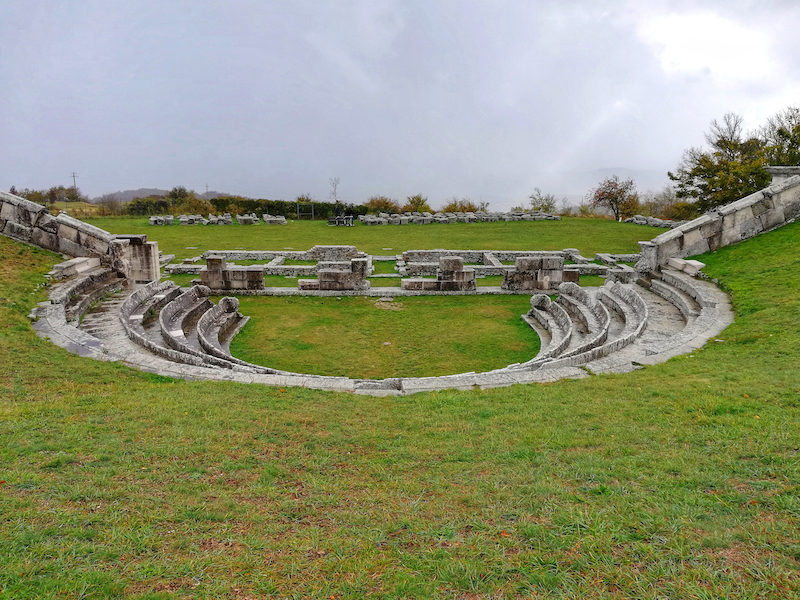
The Residences of the Royal House of Savoy in Piedmont
Le residenze reali sabaude in Piemonte
The Piedmont region hides a collection of stunning palaces, castles and hunting lodges that bear witness to the opulent lifestyles of the Savoys, the royal family who unified the country under their crown in 1861. Starting in 1562, the dukes of Savoy spared no expense in developing these grand residences for administrative and recreational purposes, hiring the finest architects and artists of the time. These architectural marvels are now recognized by UNESCO for their cultural and historical significance.
Il Piemonte ospita una meravigliosa collezione di palazzi, castelli e tenute di caccia che testimoniano lo stile di vita opulento dei Savoia, la famiglia reale che unificò il paese sotto la sua corona nel 1861. A partire dal 1562, i duchi di Savoia investirono ingenti risorse nello sviluppo di grandi residenze, destinate sia ad usi amministrativi che ricreativi, arruolando i migliori architetti e artisti dell’epoca. Oggi, questi magnifici esempi di architettura sono riconosciuti dall’UNESCO per la loro eccezionale importanza culturale e storica.
From the grandeur of Turin’s Royal Palace to the elegant Baroque architecture of the Reggia di Venaria, these residences burst with art and history, offering a unique glimpse into the fantastic architecture that was popular in Europe during the 1600s and 1700s.
Dalla grandiosità del Palazzo Reale di Torino all’elegante architettura barocca della Reggia di Venaria, queste residenze sono ricche di arte e storia, e offrono uno sguardo senza pari sulla meravigliosa architettura diffusa in Europa tra il XVII e il XVIII secolo.
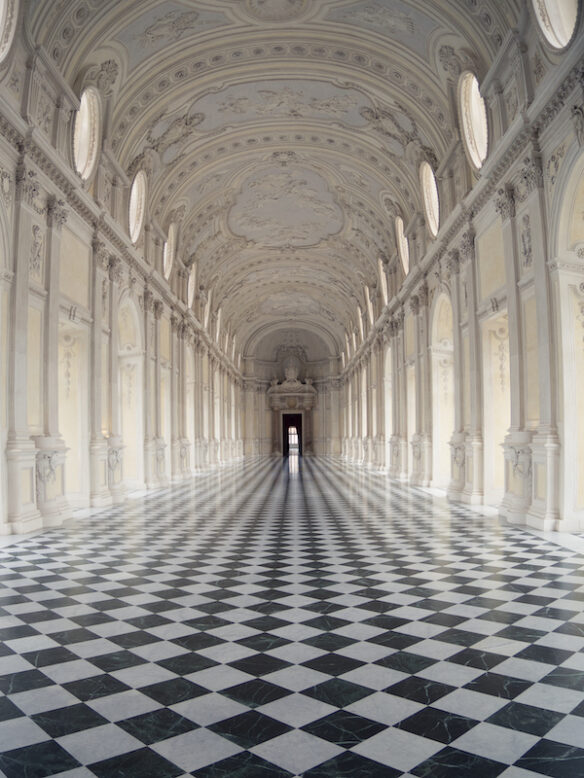
The ancient Brixia in Lombardy
L’antica Brixia in Lombardia
One of the biggest Roman archaeological parks in Northern Italy is in Brescia, a fascinating city in the Lombardy region. It’s like a miniature Rome and just as fascinating. Back in the day, Brescia was known as Brixia and was a thriving Roman settlement that took full advantage of its fertile land and abundant natural resources thanks to the city’s prime location between Lake Iseo and Lake Garda.
Brescia, una città affascinante della Lombardia, ospita uno dei più grandi parchi archeologici romani del Nord Italia. Una sorta di Roma in miniatura, altrettanto affascinante. Durante l’epoca romana, Brescia era conosciuta come Brixia ed era una fiorente colonia che sfruttava appieno le sue terre fertili e le abbondanti risorse naturali, grazie alla sua posizione privilegiata tra il Lago di Iseo e il Lago di Garda.
Right in the city center, you’ll find the remnants of the Capitoline Temple, built by Emperor Vespasian, a grand republican sanctuary, and a theatre that once held up to 15,000 spectators. Further traces of historic Brixia can be found at the nearby Santa Giulia Museum, a UNESCO World Heritage Site along with the impressive archeological park.
Nel cuore della città si trovano i resti del Tempio Capitolino voluto dall’imperatore Vespasiano, di un grande santuario repubblicano e di un teatro che un tempo poteva ospitare fino a 15.000 spettatori. Ulteriori testimonianze dell’antica città di Brixia si possono trovare nel vicino Museo di Santa Giulia, che insieme all’imponente parco archeologico, è stato dichiarato patrimonio mondiale dell’UNESCO.
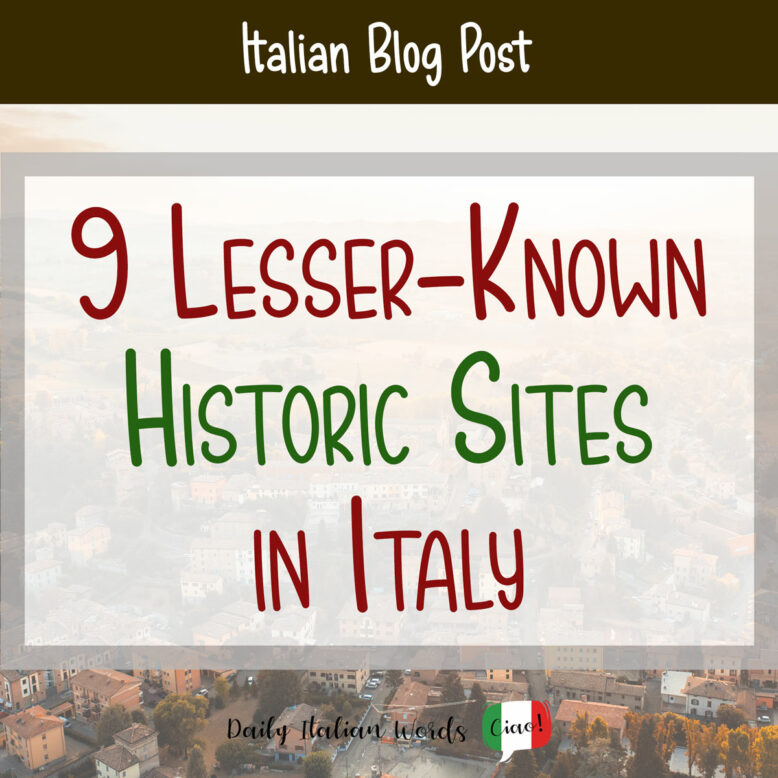
Valentina is a travel writer in love with her country. Having travelled widely around the globe, she realised there was more to explore closer to home and decided to put the passport aside for a while. You can follow her adventures around Italy on her blog myitaliandiaries.com

Valentina Nicastro is a travel writer in love with her home country, Italy. Having travelled widely around the globe, she realised there was more to explore closer to home and decided to put the passport aside for a while. When she is not immersed in documenting Italy, you’ll find her donning her communication consultant hat, weaving words as a content writer and bridging linguistic divides as a translator.


